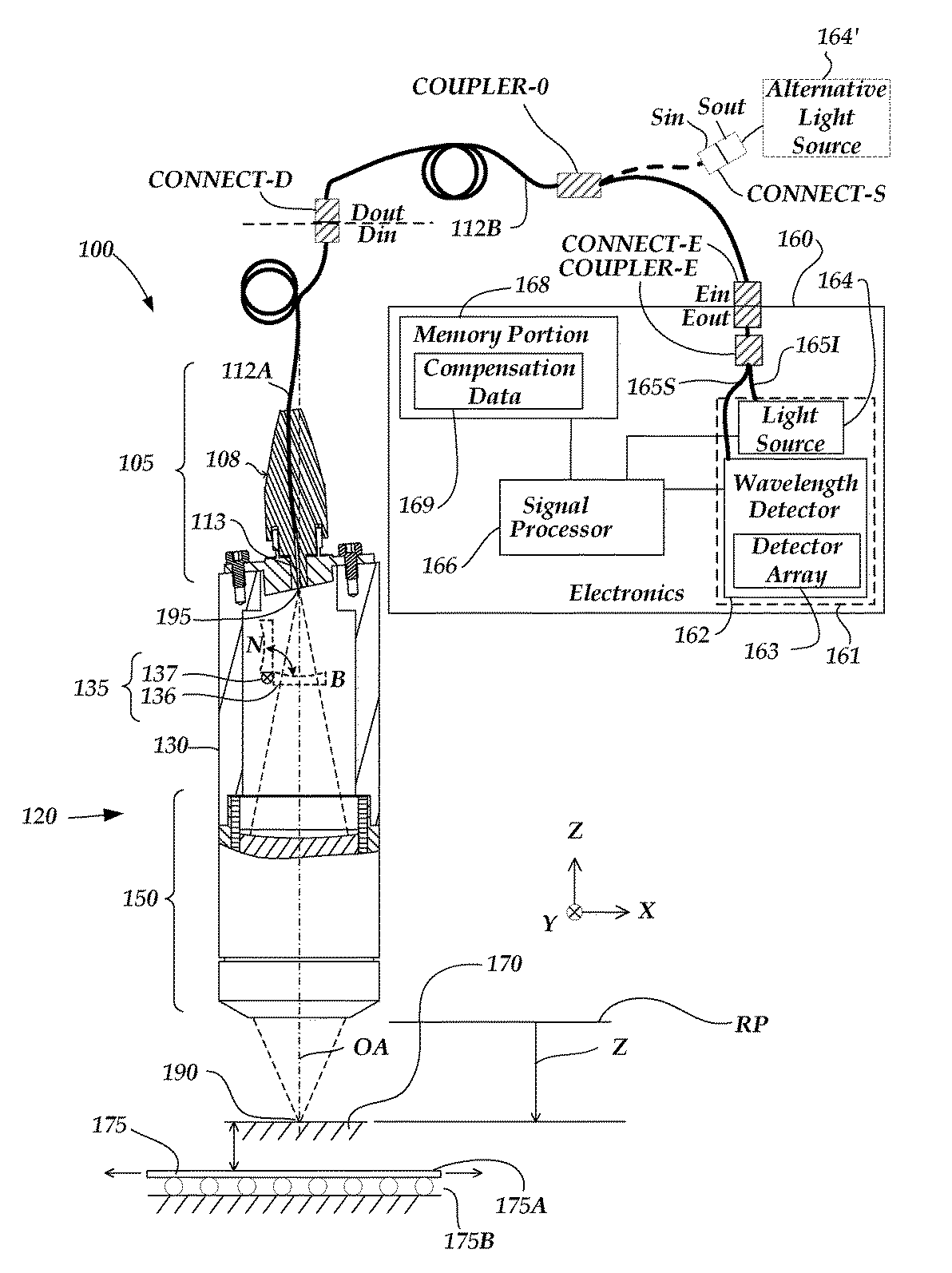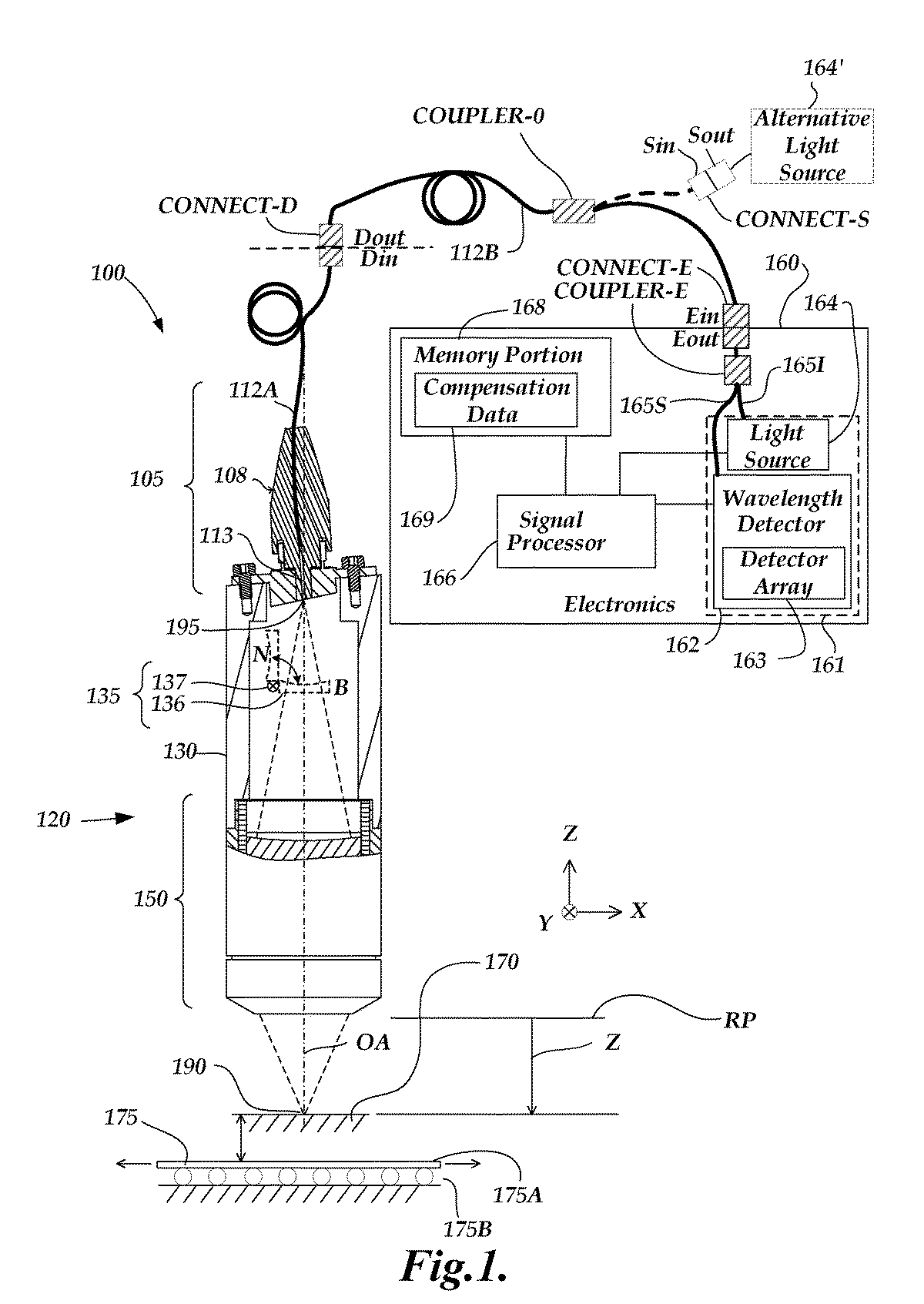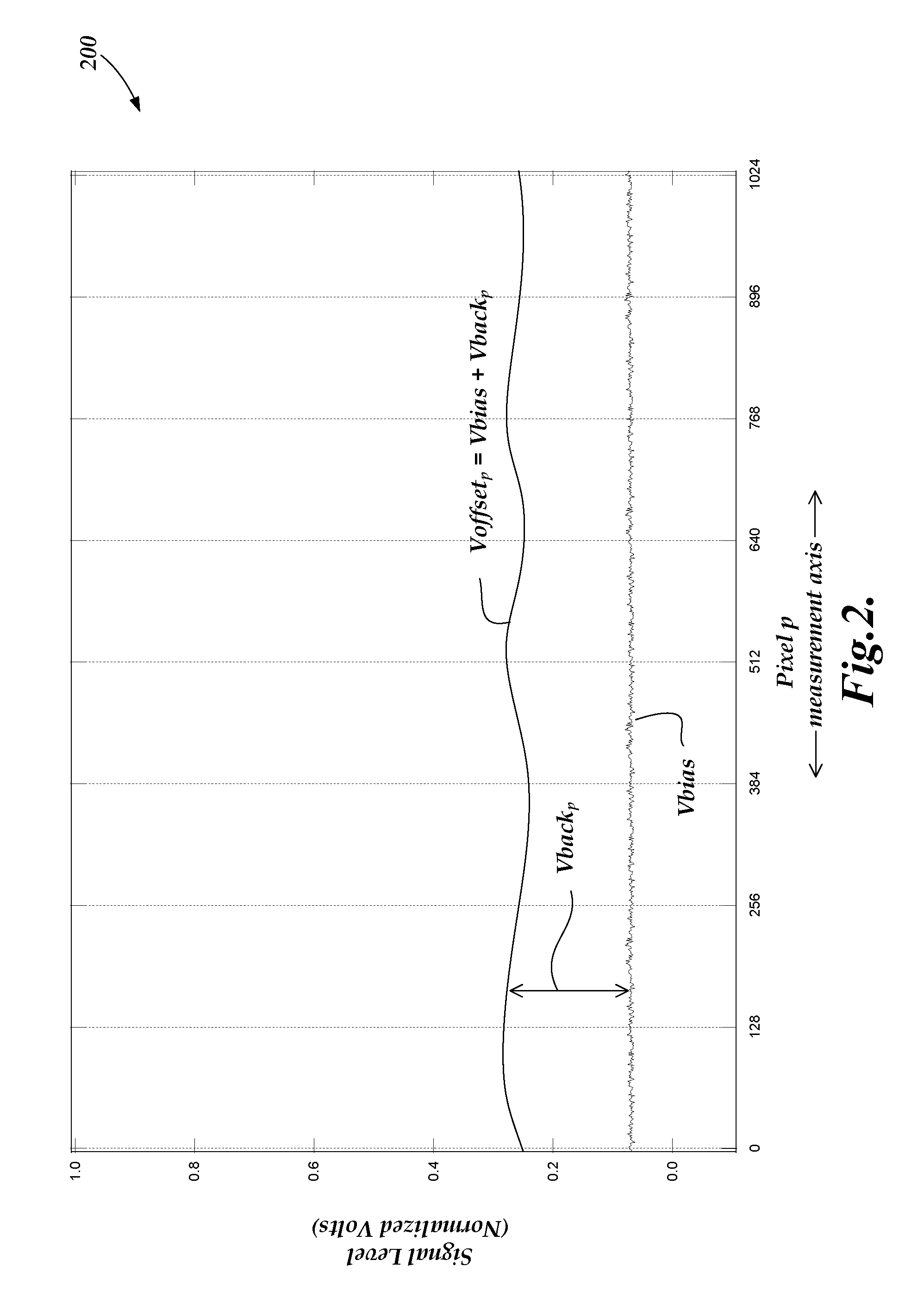Intensity compensation for interchangeable chromatic point sensor components
a technology of intensity compensation and chromatic point sensor, which is applied in the field of precision measurement instruments, can solve the problems that the method disclosed in the '799 patent does not adequately address, and achieve the effect of more robust and stabl
- Summary
- Abstract
- Description
- Claims
- Application Information
AI Technical Summary
Benefits of technology
Problems solved by technology
Method used
Image
Examples
second embodiment
[0091]FIG. 9 illustrates a method for performing short-range error compensation in order to provide a set of short-range compensated measurement profile signals MSPSRCOMP(Z) and / or implement EQUATIONS 6-9 in manner analogous to that previously outlined with reference to FIG. 8B. In particular, FIG. 9 includes a diagram of a graph 900 illustrating the raw intensity profile signal data 620 shown in FIG. 6, which may be acquired as previously described with reference to FIG. 5. FIG. 9 also shows a short-range compensated signal 630′, short range variation data 925, and short range error compensation factors 950, determined as described below.
[0092]In the particular embodiment shown in FIG. 9, the short-range compensated signal 630′ is determined by applying mathematical operations to the raw intensity profile signal data 620, approximately as follows. An Equi-Ripple High Pass VI filter available in the commercial computer program LabView® is applied to the raw intensity profile signal ...
first embodiment
[0096]FIG. 11 is a flow diagram illustrating an exemplary routine 1100 for an error compensation factor determination method of the present invention. In some embodiments, methods for error compensation factor determination according to this invention may be implemented by operations of the CPS electronics (e.g., by execution of routines residing in memory portion 168, as implemented under control of the signal processor 166.) The CPS electronics may include a means for activating an error compensation factor determination mode, in contrast to the normal measuring operation mode of the CPS, if desired. In other embodiments, methods for error compensation factor determination according to this invention may be implemented by operations a host system (e.g., a general purpose personal computer) connected to and interacting with the CPS electronics. As shown in FIG. 11, at a block 1101, a CPS electronics including a CPS source+detector subsystem comprising a CPS light source and a CPS w...
PUM
 Login to View More
Login to View More Abstract
Description
Claims
Application Information
 Login to View More
Login to View More - R&D
- Intellectual Property
- Life Sciences
- Materials
- Tech Scout
- Unparalleled Data Quality
- Higher Quality Content
- 60% Fewer Hallucinations
Browse by: Latest US Patents, China's latest patents, Technical Efficacy Thesaurus, Application Domain, Technology Topic, Popular Technical Reports.
© 2025 PatSnap. All rights reserved.Legal|Privacy policy|Modern Slavery Act Transparency Statement|Sitemap|About US| Contact US: help@patsnap.com



